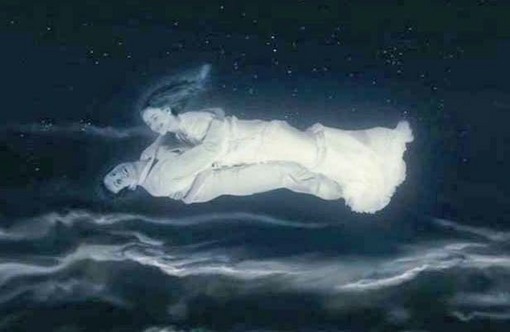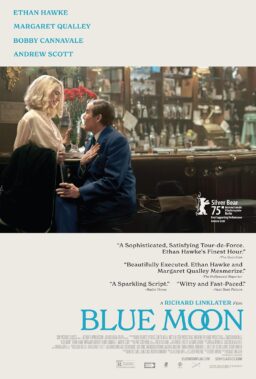Manoel de Oliveira’s “The Strange Case of Angelica” is available on demand via Netflix Instant and for download on iTunes. It is also on DVD and Blu-ray and is coming soon to Vudu.
Few of us can expect to live 100 years, much less have that age represent the prime of our career. But Portuguese director Manoel de Oliveira, who last month celebrated his 103rd birthday, has averaged one new film a year since 1985 (Ron Howard’s “Cocoon,” in which Florida retirees meet space aliens who hold the secret to youth, was released the same year — coincidence?). Two-thirds of Oliveira’s 30 features were made in his eighties and nineties; Clint Eastwood, who last year turned 81, has his work cut out for him.

Oliveira’s prodigious output, which would put most directors to shame regardless of their age, may be his way of making up for lost time. While he can trace his career all the way to the silent era, he didn’t make his first feature “Aniki Bobo” until he was 34; his second feature “Rite of Spring” came 21 years later. His stalled output can partly be attributed to his decades-long resistance to Portugal’s oppressive right-wing Estado Novo regime, during which Oliveira spent time in jail. Ironically, when leftists finally took over in the 1970s, they seized Oliveira’s family business that had sustained him throughout his artistic struggles. Fortunately by that point he had achieved international acclaim, heralded by film critic J. Hoberman as “one of the 70s leading modernists” just as he entered his seventies.

One benefit for a director whose longevity hits three digits is that that fewer unfinished projects stay on the shelf. Such is the case with his latest film, “The Strange Case of Angelica,” based on a story Oliveira first developed in 1946, about Isaac, a photographer who is hired to take portraits of a deceased young woman and falls in love with her image. Who knows what the film would look like had Oliveira made it six decades ago, but its themes of seeking beauty and vitality in the shadow of death can’t help but resonate with his late-period blossoming.

A sense of chance permeates the set-up: Isaac (played by Oliveira’s grandson Ricardo Trêpa) is really an amateur with a snapshot camera, hired only because the town photographer is away. A taxi transports him through the dark night like Orpheus crossing the Styx. He arrives at a manor filled with silent mourners in black, yet the rooms are bathed in warm, strangely seductive lighting, like a bedroom. Isaac regards Angelica’s fresh corpse, draped in angelic white and wearing an eerily beatific smile. When he looks through his viewfinder, she opens her eyes and beams radiantly at him.

The next day, as Isaac develops the photos, the image of Angelica again comes to life inside one of the prints. What does Isaac do? (Really, what can one do in this situation?) He heads to the nearby fields to photograph vineyard workers, in a beautifully filmed sequence that lovingly details their painstaking work. Shot in broad daylight, it’s a jarring shift from the surrealist interior scenes preceding it, but it suggests Isaac’s daily activities prior to his revelatory vision. It’s also a reference to Oliveira’s very first film shot in 1931, also about laborers on the Douro Valley, as well as his many years tending the family farm. Oliveira weaves his personal history throughout this film, creating the odd sensation of a movie that occupies multiple eras at once.

Though the film is supposedly set in the present, there are elements that feel out of time. Isaac tinkers with a transistor radio, and he develops his photos the old-fashioned way with chemicals and paper. His boarding house landlady chides him for subscribing to “à moda antiga,” the old way of life. Angelica’s household, especially its contemptuous maid, receives Isaac with the stuffy proprieties of pre-modern society, while in another scene, a conversation touches on the economic crisis and the environment, demonstrating Oliveira’s interest in present-day affairs. At the same time, Isaac drifts away from the conversation, his mind consumed with the vision of eternal beauty that is Angelica.

One might assume that a centenarian director would have a unique appreciation of history and time. Oliveira unravels his story slowly, lingering on long shots of the film’s small town setting, nestled along the constant, reassuring flow of the Douro River. Some scenes run for minutes without a single cut or camera movement, conveying a way of seeing the world from patient, fixed positions rather than in constant motion. A skeptic may find the approach lazy, but one sequence vindicates Oliveira’s mastery. Isaac visits the chapel for Angelica’s public viewing, then dallies in the vineyards before returning to the chapel, only to find it vacant. He then visits Angelica’s home in the hills, only to look down to see her funeral procession leaving from the chapel. How many hours have passed? Or even days? Time has become elastic and unaccountable, a slippery function of Isaac’s distressed state.

What anchors both Isaac and the viewer throughout his disorienting journey are Oliveira’s images, which in themselves are tributes to the eternal solace of art. A number of shots reference paintings: Isaac’s initial encounter with Angelica boasts the hushed dramatic lighting of the Dutch Masters. Angelica’s supine gaze into the camera recalls how the women in Manet’s canvases boldly look back at us. And a lyrical sequence where Angelica’s spirit takes Isaac on a joyride through the night rings with echoes of Marc Chagall. This impossibly romantic flight through the stars also recalls the trick movies of Georges Melies, harkening back to the earliest days of cinema and its first immortal works.

Isaac wakes from this dream trembling, wondering aloud, “Could I have been to that place of absolute love that I’ve heard about?” He puffs furiously on a cigarette; Oliveira cuts to the smoke swirling through the room as it disappears before our eyes, slipping across the realms of here and gone. “The Strange Case of Angelica” leads us between those realms, taking a simple, strange tale of mad love and letting us linger with it. Its beauty reveals itself to us gradually, like the wisdom of the ages.
_ _ _ _ _

Kevin B. Lee is a film critic and video essayist. Follow him on Twitter.












